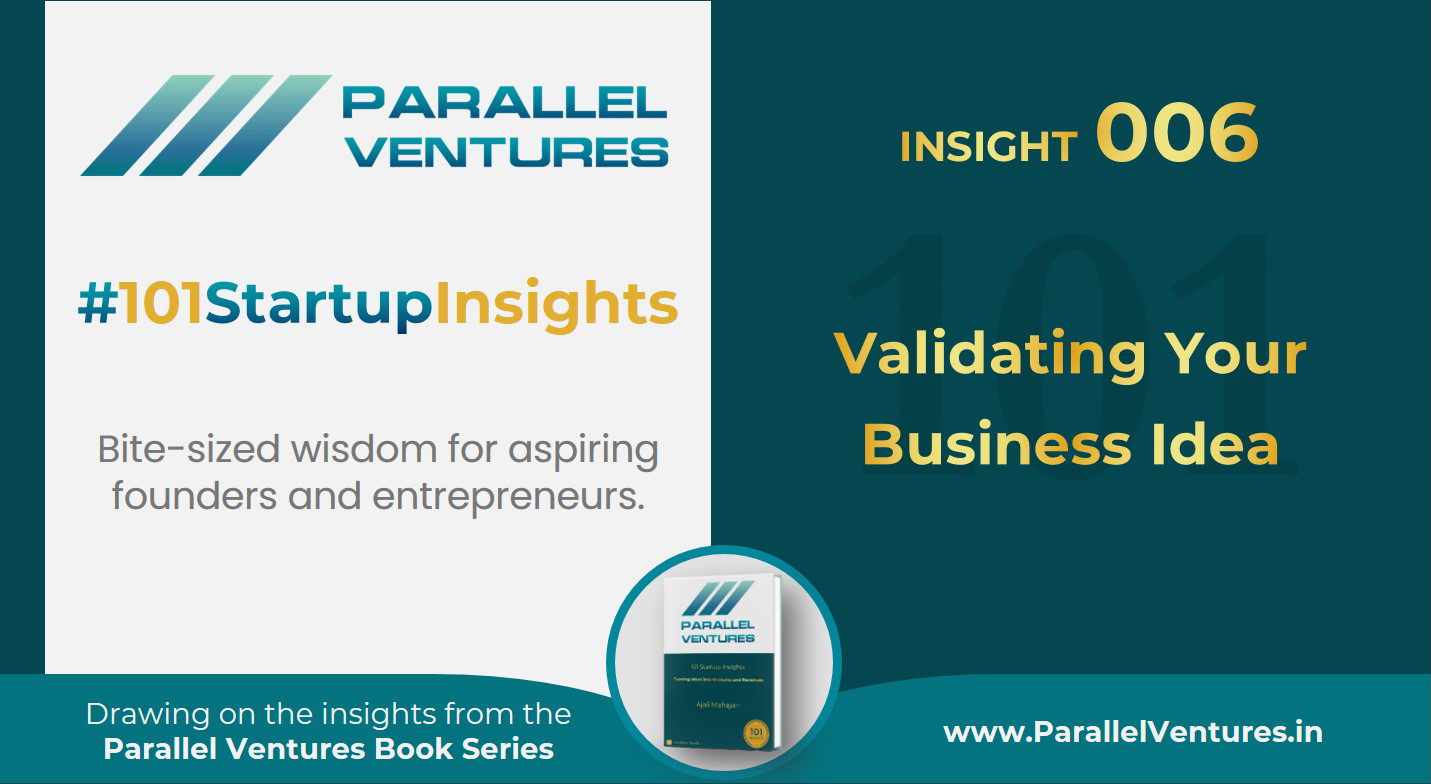
Every founder feels it at some point—that electric certainty: This idea could change everything.
It’s an intoxicating moment. But also a dangerous one.
Because belief is not the same as validation.
And confidence, while crucial, is not a substitute for evidence.
In this edition of #101StartupInsights, we shift focus from inspiration to investigation. From loving your idea… to making sure your customers will love it too.
Welcome to the practice of validation—a step many skip, and many regret skipping.
The Cost of Skipping Validation
Too often, founders move straight from idea to execution. They fall in love with their vision, start building features, raise funds, hire teams—and only later discover that their market isn’t as excited as they are.
The result? Months or even years of effort spent building something that no one truly needed.
Validation is how you prevent that. It’s your opportunity to test, tweak, and even pivot—before the stakes are too high.
Priya and Rohan: A Tale of Two Validations
Priya believed that her idea for a sustainable fashion brand would naturally find demand among eco-conscious consumers. After all, sustainability was trending, and she felt aligned with the mission.
But customer interviews told her a deeper story.
Yes, people cared about the environment—but their buying decisions were still shaped by price and style. Sustainability was a “plus,” not the primary driver.
Rather than abandoning her vision, Priya adjusted her business model. She changed her sourcing strategy, streamlined production, and recalibrated her pricing. She didn’t compromise on values—but she made sure her product met customers where they were.
Rohan, building a logistics platform, approached validation with a lean mindset. He didn’t launch with a complete product. He started with conversations.
He spoke with small business owners, asked about delivery challenges, and mapped their frustrations. Then he built a simple prototype—just enough to demonstrate his solution. A few early users tried it. They liked it. Some were willing to pay.
That was all the validation he needed to move forward with confidence.
Their journeys weren’t identical. But the principle was the same: Don’t just assume. Ask, test, and learn.
What Is Validation, Really?
Validation is not about convincing yourself you’re right.
It’s about gathering enough real-world input to confirm that:
- A specific problem exists
- A specific group of people experience it
- Your solution meaningfully addresses it
- And those people are willing to take some form of action (use it, pay for it, refer others)
It doesn’t need to be a formal research study. But it does need to be intentional, structured, and open-ended.
How to Start Validating Your Idea
There’s no single “right” way to validate a startup idea. But here are a few proven paths:
- Customer Interviews
Start by speaking with people in your target audience. Don’t pitch. Ask questions. Listen. Understand their challenges, current workarounds, and reactions to your idea.
- Prototypes or MVPs
Don’t build the full product. Create a stripped-down version—a mockup, a demo, even a clickable prototype—that focuses on the core value.
- Landing Pages & Signups
Create a simple page that explains your solution. Track how many people visit, sign up, or express interest. These signals are early indicators of traction.
- Pre-orders, Deposits, or Pilot Commitments
If someone is willing to pay—or commit time—before the full product exists, that’s powerful validation.
Remember, you’re not looking for compliments. You’re looking for commitment.
When Competition Is Actually Encouraging
Some founders worry when they discover competitors already exist. But here’s the truth: competition signals demand.
If others are building in this space, the problem is real. The market exists. Your job, then, is not to run away—but to figure out where you can offer more clarity, value, or focus than the incumbents.
As long as you bring differentiation—and solve something meaningful—there’s always room.
Validation Is Ongoing
The initial validation of your idea is not the end. It’s the beginning.
Great founders keep validating—through new segments, product updates, and shifting market conditions. They treat every release, feature, and feedback loop as an opportunity to check: Is this still what our customers need?
That mindset is what makes startups resilient.
This Insight Is Just the Beginning. In the Book, You’ll Explore…
- How Priya and Rohan structured their validation experiments, and what they learned
- Frameworks for designing and testing MVPs
- Sample interview scripts, sign-up templates, and pre-launch pages
- Tools to measure interest, gauge commitment, and interpret weak signals
- Real stories of founders who pivoted early—and saved themselves from costly mistakes
Before You Go
Your idea may be beautiful. But its real test lies in the world.
So test it.
Tweak it.
Talk to people.
And don’t fall in love with your solution—fall in love with solving.
The more you validate, the more you reduce risk—and increase your chance to build something truly lasting.
Until next time,
Warmly,
Ajaii Mahajan
Founder, Mentor, Author – Parallel Ventures
Related Links
🌱 Explore the Books – Parallel Ventures
